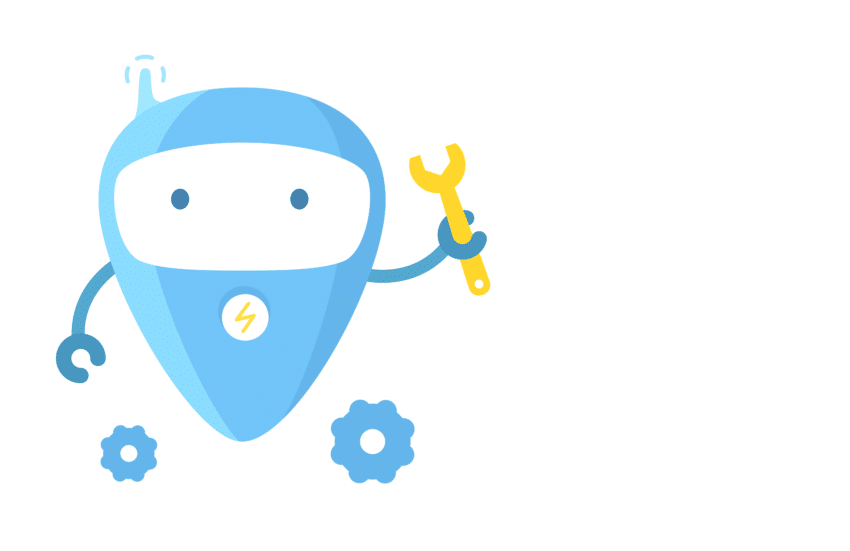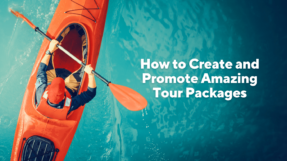Table of Contents
You’ve no doubt read the headlines and have had discussions around artificial intelligence (AI), what it can do and especially what it will mean to use AI in tourism and travel. The hype has been hard to ignore over the last year, since ChatGPT made its appearance and brought generative AI into the mainstream with a bang.
While things have died down after that initial flood of AI-related articles and opinions, the travel industry is increasingly turning to AI to streamline processes, enhance marketing and improve customer service. Many of these initiatives are in response to how customers are already becoming more familiar with using AI to plan trips, generate ideas and more.
In this article, we’ll explore the power of generative AI in travel and how you can use AI in your marketing and customer service. Of course, there are also pitfalls, not least the need to retain that all important human touch.
What is generative AI?
Artificial intelligence is when people program computers or machines to think and learn like humans. Generative AI is when machines use their programming to understand how things work and then use what they have learned to make, or generate, new content, including text, images, code, videos and much more.

When it comes to your tour and activity business, generative AI’s capabilities can help in a number of ways, including:
- Generate content
- Create images and videos
- Gain customer insights
- Improve customer service
- Create efficiencies
- Better predict what customers want
- Improve your tour offerings
Imagine the possibilities. Or even better, discover how one company uses AI:
Case study: How WT Tours Uses AI
WT Tours has integrated Generative AI into its operations. This AI, through its neural networks, has analyzed vast amounts of travel data, including customer preferences, historical trends, and even local events. When a customer reaches out, expressing their interest in a trip to a tropical destination, the generative AI quickly processes this information. It considers various factors such as budget, weather conditions, available activities and safety advisories. Within moments, it generates a personalized travel itinerary for the customer, complete with ideal travel dates, activities and even restaurant recommendations.
In marketing, this AI helps WT Tours create engaging content effortlessly. They can simply input key information, and the Generative AI generates compelling blog posts, captivating social media updates and enticing email newsletters. This not only saves WT Tours staff time, but also ensures their content is tailored to the interests of their diverse customer base.
Moreover, WT Tours’ customer service department employs a chatbot powered by AI. This chatbot is available 24/7 and offers instant assistance. Customers can ask about trip details, booking information, or local recommendations, and the chatbot responds promptly. This quick and efficient support enhances the overall customer experience, leaving WT Tours’ human staff free to address more complex inquiries.
Hopefully that makes you motivated to explore how AI can help your business. But wait, before you Google the company to find out more, would it surprise you to know that WT Tours is a fictional company? And that the company name and the entire case study above was created by generative GPT?
We asked ChatGPT to generate a short case study to show how a fictional tour operator could use AI, and we reproduced it in its entirety here, with just a little editing for grammar. This was our “prompt” (the question we asked; a very important part to get right when using AI to generate content): “Provide a fictional example of a tour operator using generative AI in their business?” We did this to illustrate the remarkable capabilities of generative AI before getting into the ins, outs, and pitfalls.
4 ways to use AI in tourism marketing

Here are some ways AI can help you streamline and improve your tourism marketing efforts:
- Data-driven marketing: AI can analyze customer data to provide valuable insights that shape and inform your marketing strategies. This enables you to refine and fine-tune your marketing campaigns to better meet both customer and business needs.
- Social media management: Social media is a vital part of marketing for tour and activity operators. AI tools can help you manage your social media campaigns by scheduling posts, tracking engagement metrics, generating the best hashtags and more to ensure you maintain an active, engaging and useful social presence.
- Content generation: Crafting fresh tour descriptions, blog posts, emails, newsletters and social media content can be time-consuming. Used carefully (see the pitfalls below), AI can help you create content, including images and videos as well as text.
- Search engine optimization (SEO): AI-powered SEO tools can optimize your website content to improve search engine rankings. In fact, Google is harnessing generative AI to improve its search and marketing tools, as highlighted during a recent Google Marketing Live event. The generative AI generates ads that align with the user’s queries and needs, creating a highly tailored experience. Google also showcased the use of AI in creating images for advertising campaigns through its Product Studio tool, allowing marketers to customize backgrounds.
5 ways tour operators can use AI in customer service
Here are some ways AI can help you improve your customer service experience:

- 24/7 availability: AI-powered chatbots and virtual assistants can answer customer questions and help them book tours around the clock. Even if their query cannot be answered by a chatbot, customers still feel they can reach out any time.
- Instant responses: AI chatbots excel at providing quick answers to frequently asked questions. This also frees up your customer service staff from answering these common questions.
- Personalized trip recommendations: Use AI to analyze customer data to offer personalized suggestions for tours and activities based on individual preferences. This personal touch increases the likelihood of customers choosing tours that align with their interests, resulting in higher satisfaction.
- Language translation: AI can help you communicate with customers in their language through automated translation options.
- Feedback analysis: Put AI to work to mine customer feedback and reviews to extract insights that can help you improve your offerings and customer service.
Pitfalls to watch out for when using AI in tourism
While AI can be a valuable asset, you should also be aware of potential pitfalls. Here are some of the main ones to be on the lookout for:

- Copyright issues: Be careful to avoid copyright violations when using AI-generated text, images and videos. Your content must be original and shouldn’t infringe upon intellectual property rights. Please note that AI-generated content can’t be copyrighted under US law. This means that anyone can use content you create using AI.
- Inaccurate content: AI tools often produce inaccurate, poor quality or just plain wrong content. Always have a real person review, fact-check and edit everything you generate.
- Bias: Generative AI machines are trained on sets of data that could contain deliberate or accidental bias, such as particular political leanings or racial and gender stereotypes. Bias can show up in AI-generated text, images and videos.
- Data privacy concerns: Collecting and using customer data is vital for personalization, but it’s equally important to respect data privacy laws. Always comply with data protection regulations when using AI tools with your customer data.
- Lack of a human touch: While AI can automate many tasks, retaining a human touch in customer interactions is essential, especially when offering personalized services.
- Inauthenticity: The content you produce also needs to sound like your brand voice and retain that human touch to resonate with customers and sound authentic. AI-generated content can sometimes sound generic or stilted, so take care with your prompts and edit the final product for tone.
AI tools for tour and activity operators
There are a variety of AI tools tour and activity operators can use to streamline your operations, with new ones appearing all the time. Here are a few to check out:

- HubSpot AI: This marketing automation platform offers AI-driven content suggestions, email marketing and customer relationship management. It can also help you to create content.
- OwlyWriter AI (Hootsuite): Hootsuite uses AI in its social media management platform. It’s OwlyWriter AI tool helps you generate ideas and content for your various social media channels.
- Chatfuel: This chatbot-building platform enables tour operators to create chatbots for instant customer service. It can answer common customer inquiries and even facilitate bookings.
- BrightEdge: BrightEdge is an AI-powered “personal data analyst” for SEO. It can help you improve your website’s search engine rankings by suggesting improvements and optimizing your website content for search.
- Jasper: As well as a tool like ChatGPT, there are a number of dedicated AI apps that can help you create content. Jasper.ai is one of these.
By embracing generative AI, selecting the right tools for your business and customers, and—perhaps most importantly of all—being aware of the pitfalls, you can use AI to make a big difference to your marketing and customer service operations.
Bear in mind that this technology is developing rapidly, so it’s important to keep up with trends. Consider setting up a Google Alert for “Ai in travel and tourism.” And however you choose to integrate AI into your processes, remember: AI can save time, but for your customers, nothing beats the human touch.





